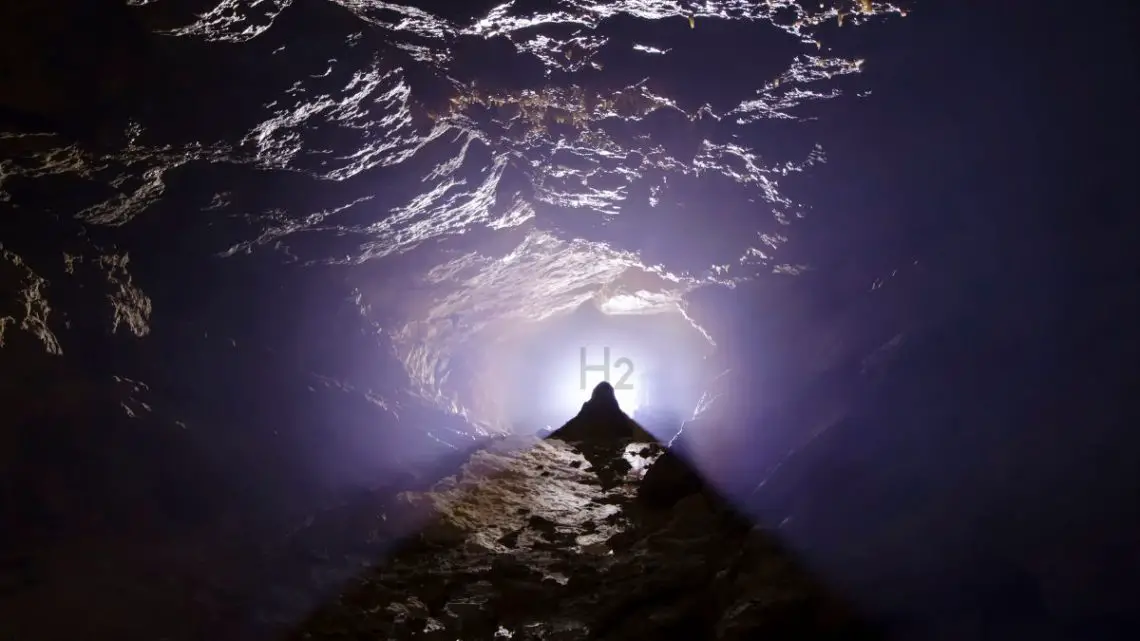
Could geologic hydrogen be a reliable low-carbon alternative energy source?
February 28, 2024That’s what a newly established joint industry program seeks to discover.
Colorado School of Mines and the U.S. Geological Survey intend to study the potential of geologic hydrogen as a low-carbon alternative power source and have created a joint industry program supported by leading international companies for their research.
A collaborative effort that is the first of its kind.
According to Mengli Zhang – co-director of the Center for Gravity, Electrical and Magnetic Studies and co-lead of the new joint program for Colorado School of Mines (Mines) – this collaboration on geologic H2 marks the first between a federal agency and academia.
In this world first industry supported H2 exploration consortium, researchers at Mines and the US Geological Survey (USGS) will advance the understanding of geologic hydrogen systems. They will also develop surface and subsurface exploration tech to locate the subsurface hydrogen deposits.
“With the combined expertise in electromagnetics, gravity and magnetics in mineral exploration and exploration seismology for natural gas at Mines, we are uniquely positioned to tackle the subsurface exploration research in geologic hydrogen,” said Zhang.
What is geologic hydrogen?
Geologic hydrogen, also known as natural hydrogen, white hydrogen or gold hydrogen, is a naturally occurring gas trapped in pockets under the ground. It is composed of continuously produced subsurface hydrogen deposits that naturally occur. These deposits are formed by reactions between water and rock in the Earth’s subsurface.

The USGS and Mines believe – as do many others – that this hydrogen has significant potential as an energy resource. Additionally, it’s a resource that could help decrease the climate impact of multiple industries (e.g., steel making, industrial heating, and heavy-duty transport, etc.) that cannot easily make the switch from fossil fuels to battery electric power.
Preliminary research suggests that huge quantities of this hydrogen may exist in countless rock formations around the world.
The consortium’s research will focus on four key areas.
The geologic hydrogen research will zero in on the development of four major areas:
- A geologic “hydrogen system” model that identifies hydrogen in the subsurface.
- Surface exploration approaches to refine understanding of where subsurface H2 accumulations exist.
- Subsurface exploration tools to image the natural hydrogen systems and possible economic accumulations suitable for producing energy.
- 3D reactive transport modeling to improve the understanding of these systems and offer guidance for developing exploration strategies.
Developing immediately deployable geologic hydrogen exploration tech.
 Yaoguo Li, professor of geophysics at Mines, said that a primary focus of the consortium is to develop “immediately deployable technologies” as there is a need and desire for technologies that can help in the exploration of geologic hydrogen.
Yaoguo Li, professor of geophysics at Mines, said that a primary focus of the consortium is to develop “immediately deployable technologies” as there is a need and desire for technologies that can help in the exploration of geologic hydrogen.
Li explained that these exploration technologies “can be applied by industry in the near future to contribute directly to the energy transition, as well as for strategies that can be used by society to tackle the challenges in mitigating climate change for better human life.”
Ready to test your knowledge on the most abundant element in the universe? Take our fun and engaging Hydrogen Quiz now! [forminator_quiz id=”58712″]



 With over 15 years of reporting hydrogen news, we are your premier source for the latest updates and insights in hydrogen and renewable energy.
With over 15 years of reporting hydrogen news, we are your premier source for the latest updates and insights in hydrogen and renewable energy.